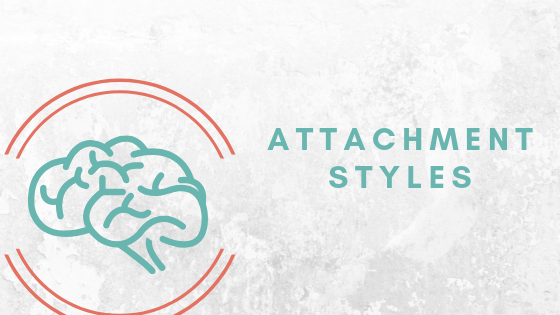Attachment Styles
Attachment Styles
Most of us are aware of the important role that parents play in the lives of their children from birth. What many of us may not be aware of is how a young child’s attachment to their parent may be influential over their future relationships as they grow up.
John Bowlby was a psychologist who studied attachment between parent and child. This study was conducted through putting infants in a room with their mother for a few minutes, having a stranger come into the room and acquaint with the mother and baby, having their mother leave the room, and then having their mother return a few minutes later. The reactions of the baby were recorded during each step of the process. Through this research came about four primary types of attachment.
Attachment Styles:
1. Avoidant attachment
In the study, these babies often did not move toward their mother when she went to leave the room and did not react when she returned.
What this means…
These children are likely products of emotionally unavailable parents. These children tend to not feel secure in expressing their emotions, so instead, they “turn off” their emotions in and effort to protect themselves emotionally. This lead to emotionally distant children.
2. Ambivalent attachment
In the study, these babies became very upset upon their mother leaving the room and immediately went to their mother when she returned. However, the child expressed behavioral outbursts that ranged from anger to going limp, and the child could not be comforted by their mother.
What this means…
These children were likely exposed to parents who were inconsistent with caring for their child and often preoccupied when providing care. These infants felt as though their mother was not there for them and would not be able to help calm them down. These infants typically felt anxious, angry, and insecure.
3. Disorganized attachment
While this was not identified in the original studies, this style of attachment was later found to present as infants who exhibited disorganized behavior when upon their mother’s return and arrival. Disorganized behavior included moving toward their mother and then freezing, turning away, freezing again, and then hiding. These children could not be soothed by their parent.
What this means…
Infants who expressed this behavior were likely encountering abuse or parents with severe psychological disturbances or substance use. These children were in a state of internal conflict, as they wanted to go toward their mother, who should be a source of safety, but then froze as they realized the danger associated with the parent. These infants were typically passive, non-responsive, or angry or depressed.
4. Secure attachment
In the study, these infants explored freely with their mother present, gave some protest upon their mother leaving, and went to their mother upon her return, calmed down, and continued playing.
What this means…
Children with secure attachment were likely exposed to parents who were emotionally available and able to meet the child’s needs. The child feels safe to explore their world, knowing that their mother is a space of safety.
In the real world…
While this study was conducted on mothers only, this also applies to fathers and the dynamic of the relationship between father and child.
Attachment styles with parents form the basis of a child’s attachment with others throughout their lives. Children raised with insecure attachments likely experience issues with personal and intimate relationships as they grow into adulthood. However, these individuals are not destined to live with an endless loop of maladaptive relationships. Things such as therapy can be widely beneficial in helping people identify their attachment style, the reasons behind it, and how to work past it.

